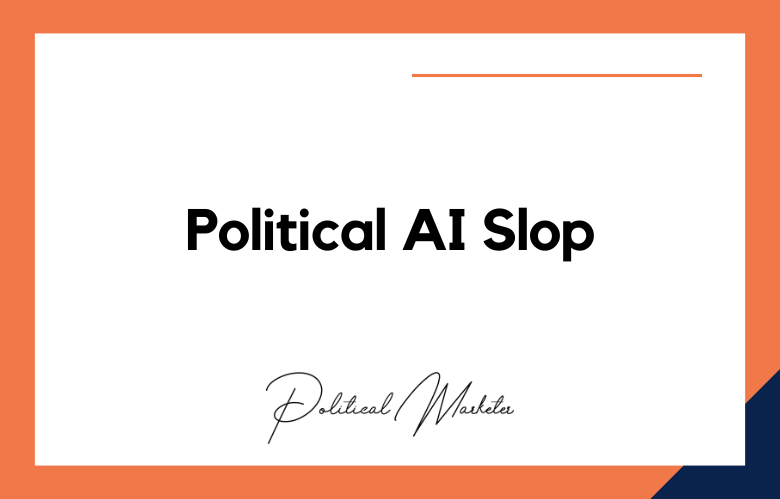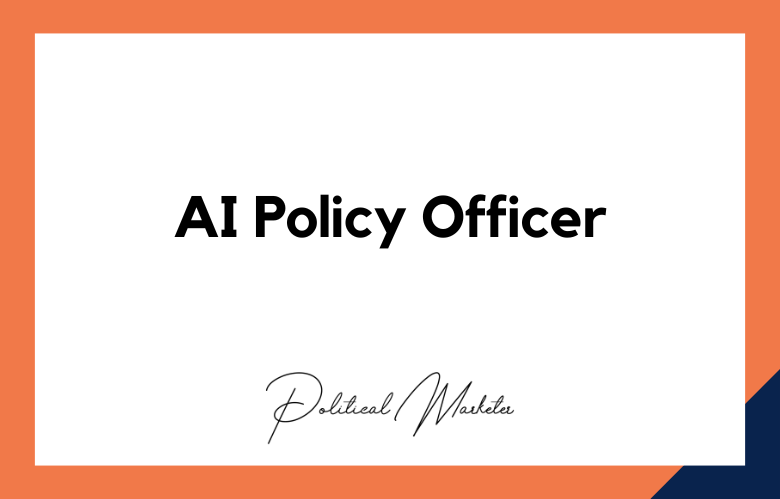Overfitting and underfitting are critical concepts in developing predictive models for political campaigns, where the balance between model complexity and predictive accuracy can significantly impact strategic decisions.
In the fast-paced and data-intensive environment of political campaigning, leveraging machine learning models to predict voter behavior, sentiment analysis, or campaign outcomes is becoming increasingly common. However, ensuring these models are reliable and generalizable is paramount.
Overfitting and Underfitting for Political Campaigns: Strategies and Consequences
Overfitting occurs when a model is excessively complex, capturing noise in the training data as if it were an actual pattern, leading to poor performance on new, unseen data. This can lead a political campaign to draw incorrect conclusions about voter behavior or the effectiveness of campaign strategies, potentially misallocating resources or missing critical voter insights.
Underfitting, on the other hand, happens when a model is too simplistic to capture the underlying patterns in the data. This results in a lack of fit and poor predictive performance on training and new data. Underfitting in a political campaign might lead to overly broad or generic strategies that fail to resonate with specific voter segments or address critical issues effectively.
Navigating the trade-off between overfitting and underfitting involves careful model selection, validation, and tuning. It also requires a nuanced understanding of the data, the electoral context, and the campaign’s specific objectives.
By achieving the right balance, political campaigns can develop robust predictive models that offer valuable insights to inform targeted, effective, and adaptable campaign strategies.
- Key Takeaways
- Understanding Overfitting and Underfitting
- Detecting Model Fit Issues in Campaigns
- Balancing Bias-Variance for Reliable Predictions
- Managing Overfitting and Underfitting Strategies
- Choosing Effective Validation Techniques
- Exploring Model Generalization in Politics
- Real-World Consequences of Poor Model Fit
- Optimizing Campaign Strategies with Data Insights
- Final Remarks
- Frequently Asked Questions
- What are overfitting and underfitting in the context of political campaigns?
- How can one detect issues related to model fit in political campaign data analysis?
- Why is managing overfitting and underfitting crucial for developing effective campaign strategies?
- What role do validation techniques play in ensuring the effectiveness of predictive models for political campaigns?
- How do poor model-fit consequences impact real-world outcomes in political campaigns?
Overfitting and underfitting are not just buzzwords in political campaigns; they can make or break a candidate’s success. Understanding these concepts is crucial in an era where data analytics drives campaign strategies.
Overfitting occurs when a model fits the training data too closely, leading to inaccurate predictions, while underfitting results in oversimplified models that fail to capture the complexity of voter behavior.
By delving into the historical context, we can see how past campaigns have fallen victim to these pitfalls, emphasizing the need for a balanced approach. Join us as we explore the impact of overfitting and underfitting on political campaigns and uncover strategies to navigate these challenges effectively.
Key Takeaways
- Understand the balance: To ensure accurate predictions, be aware of the concepts of overfitting and underfitting in political campaign models.
- Detect model fit issues: Regularly check for signs of overfitting and underfitting in your campaign data to maintain model reliability.
- Manage bias-variance trade-off: Find the right balance between bias and variance for more dependable campaign predictions.
- Implement validation techniques: Use effective validation methods like cross-validation to prevent overfitting and underfitting in political campaign models.
- Focus on generalization: Explore model generalization in politics to create robust and adaptable campaign strategies.
- Consider real-world implications: Understand the consequences of poor model fit in political campaigns to avoid costly mistakes.
Understanding Overfitting and Underfitting
Overfitting
Overfitting occurs when a model learns the details and noise in the training data to an extent that negatively impacts its performance on new data. In political campaigns, overfitting can lead to inaccurate predictions because the model captures random fluctuations as if they were significant patterns.
When overfitting a campaign analysis model, it may perform exceptionally well on historical campaign data but fail to generalize to new situations. This can result in misleading insights and flawed decision-making, ultimately harming the effectiveness of political strategies.
Underfitting
On the other hand, underfitting happens when a model is too simple to capture the underlying patterns of the data. In political campaigns, underfitting can seriously affect the effectiveness of campaign strategies.
An underfitted model in campaign analysis may oversimplify complex relationships within voter behavior or demographic trends, leading to suboptimal strategic decisions. This can result in missed opportunities for targeted messaging, resource allocation, and overall campaign optimization.
Detecting Model Fit Issues in Campaigns
Signs of Overfitting in Political Campaign Models
Excessive complexity in political campaign models can identify overfitting, where the model fits the training data too closely. This can lead to high accuracy on training data but poor performance on new, unseen data. Common signs include deficient training error but high testing error and significant variations in model predictions.
Challenges of Detecting Underfitting Issues
Detecting underfitting issues in campaign data analysis can be challenging due to oversimplified models that fail to capture the underlying patterns. Unlike overfitting, underfitting results from models being too simple to represent the data’s complexities accurately. Signs include high training and testing errors, indicating that the model is not capturing enough information from the data.
Importance of Continuous Model Fit Monitoring
Monitoring model fit during a political campaign ensures reliable predictions and effective decision-making. Campaign teams can adjust model parameters, such as feature selection or regularization techniques, to improve model performance by monitoring for signs of overfitting and underfitting. This proactive approach helps maintain model generalization and avoid biased or inaccurate predictions.
Balancing Bias-Variance for Reliable Predictions
Minimizing Bias
Bias in political campaign models can lead to inaccurate predictions by oversimplifying complex relationships. To minimize bias, increase model complexity and include more diverse data sources.
They are reducing bias by evaluating models regularly and incorporating new variables to capture nuanced relationships. By addressing bias, campaign models can make more precise predictions.
Managing Variance
Variance, on the other hand, results in excessive sensitivity to fluctuations in the training data, leading to poor generalization. To manage variance, utilize techniques like cross-validation and ensemble methods.
By implementing strategies that reduce variance, such as feature selection and regularization, political campaign models can maintain consistency across different datasets.
Impact of Bias-Variance Trade-Off
The bias-variance trade-off is crucial in determining the overall predictive performance of campaign models. Finding the optimal balance between bias and variance is essential for creating reliable predictions.
When bias is too high, the model oversimplifies reality, leading to inaccurate forecasts. Conversely, excessive variance causes the model to be overly sensitive to training data noise, resulting in poor generalization capabilities.
Managing Overfitting and Underfitting Strategies
Prevent Overfitting in Political Campaigns
To manage overfitting in political campaign models, it is crucial to regularize the model by incorporating techniques like L1 or L2 regularization. Another effective strategy is cross-validation, which helps evaluate the model’s performance on unseen data. Moreover, collecting more diverse and relevant data can also help reduce overfitting.
Addressing Underfitting Challenges
To tackle underfitting issues in campaign data analysis, one should consider increasing model complexity by adding more features or using a more sophisticated algorithm. Feature engineering plays a vital role in enhancing the model’s ability to capture underlying patterns in the data. Fine-tuning hyperparameters can help improve the model’s performance and mitigate underfitting.
Optimizing Model Complexity for Reliable Predictions
Optimizing model complexity is essential to prevent overfitting and underfitting in political campaigns. Model selection techniques such as grid search or random search can help identify the optimal model complexity by finding the right balance between bias and variance. It is also crucial to monitor and update the model regularly based on new data to ensure its continued effectiveness.
Choosing Effective Validation Techniques
Cross-Validation
Cross-validation involves dividing the dataset into subsets, training the model on a combination of them, and testing it on the remaining subset. This technique helps in evaluating the model’s performance across different data points.
Implementing k-fold cross-validation ensures that the model is trained and tested on various combinations of data points, reducing the risk of bias in evaluating political campaign models.
By cross-validation, political campaign teams can effectively validate their models and ensure they generalize well to new data sets.
Importance of Model Evaluation Metrics
Selecting appropriate evaluation metrics is crucial for accurately assessing the performance of political campaign models. Metrics like accuracy, precision, recall, and F1 score help understand how well the model predicts outcomes based on different validation techniques.
Political campaigns can leverage these metrics to identify areas where their models may be overfitting or underfitting, allowing them to make necessary adjustments for better performance.
Regularization Techniques
Incorporating regularization techniques such as L1 (Lasso) and L2 (Ridge) regularization helps prevent overfitting by adding penalty terms to the model’s coefficients. These techniques assist in simplifying the model while maintaining its predictive power.
Political campaign teams can apply regularization methods during the validation process to address issues related to overfitting and underfitting, ensuring more robust and accurate predictions.
Exploring Model Generalization in Politics
Importance of Generalization
Model generalization is crucial in political campaigns to ensure accurate predictions and effective decision-making. It refers to the ability of a model to perform well on unseen data beyond the training dataset. In political campaign data analysis, achieving generalization is paramount for reliable forecasting.
Generalization significantly impacts the predictive power of campaign models. When a model overfits the training data, it memorizes noise rather than learning patterns, leading to poor performance on new data. Conversely, underfitting occurs when a model is too simplistic, failing to capture the underlying trends in the data.
Strategies for Achieving Model Generalization
One way to achieve model generalization in political campaigns is by regularizing the model. Regularization techniques like Lasso and Ridge regression help prevent overfitting by adding penalties to the model’s complexity. By striking a balance between bias and variance, these methods enhance generalizability.
Another approach is through feature selection. By selecting only the most relevant features that contribute significantly to prediction accuracy, unnecessary noise, and irrelevant information are eliminated. This streamlined approach enhances model generalization by focusing on essential variables.
Maintaining Generalization in Political Campaigns
Continuous model evaluation is essential to maintain model generalization throughout a political campaign. Regularly assessing the model’s performance on validation datasets helps detect signs of overfitting or underfitting early on. Adjustments can then be made to improve generalizability.
Moreover, incorporating ensemble methods can enhance model generalization by combining multiple models’ predictions. Techniques like bagging and boosting reduce variance and improve overall predictive performance by leveraging diverse models’ strengths.
Real-World Consequences of Poor Model Fit
Overfitting Implications
Overfitting political campaign data analysis can lead to misleading predictions and ineffective strategies. When a model is overfitted, it performs exceptionally well on training data but fails when applied to new, unseen data. This can result in campaigns targeting the wrong audience or focusing on irrelevant issues. For instance, if a predictive model overfits by capturing noise as if it were a pattern, a political campaign might invest heavily in strategies that do not resonate with voters.
Underfitting Risks
Underfitting, on the other hand, poses different risks in campaign modeling. A model that underfits lacks complexity and fails to capture the nuances and patterns in the data. In political campaigns, underfit models may provide inaccurate voter insights or fail to identify crucial trends. This can lead to missed opportunities for engagement and ineffective resource allocation during campaigns.
Impact on Political Campaigns
In real-world scenarios, poor model fit can significantly impact the outcomes of political campaigns. For example, during the 2016 US presidential election, some polling models suffered from overfitting issues by relying too heavily on historical data without accounting for changing voter sentiments. This resulted in inaccurate predictions and surprises in election results.
Furthermore, underfit models have also negatively influenced campaign strategies. In the UK’s 2019 general election, some polling models underestimated certain parties’ support due to underfitting issues. This led to incorrect assumptions about voter behavior and affected campaign decisions such as resource distribution and messaging.
Examples of Model Fit Consequences
- Overfitting: A local election campaign relied on a predictive model that overfitted historical turnout data without considering demographic shifts. As a result, they targeted areas with high past turnout rates but missed engaging with younger voters who had become more politically active.
- Underfitting: During a regional referendum campaign, an underfitted model failed to capture subtle changes in public opinion leading up to the vote. Consequently, campaigners were unprepared for the close outcome and struggled to adjust their messaging effectively.
Optimizing Campaign Strategies with Data Insights
Leveraging Data for Optimization
Data insights play a crucial role in optimizing campaign strategies, helping to address issues like overfitting and underfitting. By analyzing data trends, campaigns can effectively tailor their messaging to target specific demographics.
Utilizing data-driven decision-making allows campaigns to make informed choices based on real-time information rather than intuition alone. This approach enables them to adjust strategies promptly, maximizing impact and minimizing wasted resources.
Enhancing Effectiveness Through Data
Implementing a data-centric approach empowers political campaigns to better understand voter behavior patterns. This understanding enables them to create targeted messages that resonate with their audience, leading to increased engagement and support.
By leveraging data insights, campaigns can identify critical issues that matter most to voters, allowing them to craft policies and messages that align with public sentiment. This alignment enhances the relevance of the campaign’s platform, increasing its appeal to potential supporters.
Recommendations for Successful Outcomes
- Regular Data Analysis: Conduct frequent analyses of campaign data to track performance metrics and make necessary real-time adjustments.
- Segmentation Strategies: Utilize data segmentation techniques to target specific voter groups with tailored messaging that speaks directly to their concerns.
- A/B Testing: Implement A/B testing methodologies to compare campaign approaches and determine the most effective strategies.
- Predictive Modeling: Employ predictive modeling techniques to forecast voter behavior and optimize resource allocation for maximum impact.
Final Remarks
You’ve delved into the intricacies of overfitting and underfitting in political campaigns, understanding the critical balance needed for reliable predictions. You can optimize campaign strategies with valuable data insights by detecting and managing model fit issues effectively. Remember, the real-world consequences of poor model fit can significantly impact outcomes. Embrace effective validation techniques and explore model generalization to ensure your strategies resonate with your audience.
As you navigate the complexities of model fitting in political campaigns, prioritize maintaining a fine-tuned balance between bias and variance. Your ability to manage overfitting and underfitting strategies will be pivotal in shaping successful campaign outcomes. Stay vigilant, stay informed, and empower your campaign with data-driven decisions for a brighter political future.
Frequently Asked Questions
What are overfitting and underfitting in the context of political campaigns?
Overfitting occurs when a model is too complex and fits the training data too closely, leading to poor generalization. Underfitting happens when a model is too simple to capture the underlying patterns, resulting in low accuracy.
How can one detect issues related to model fit in political campaign data analysis?
Analyzing the bias-variance trade-off can detect issues with model fit. Balancing bias (underfitting) and variance (overfitting) helps ensure reliable predictions for political campaigns.
Why is managing overfitting and underfitting crucial for developing effective campaign strategies?
Managing overfitting and underfitting ensures that the predictive models used in political campaigns are optimized for accuracy and reliability. Addressing these issues allows campaign strategies to be based on robust data insights.
What role do validation techniques play in ensuring the effectiveness of predictive models for political campaigns?
Choosing effective validation techniques helps assess how well a model generalizes to new data. This step is crucial in evaluating predictive models’ performance and ensuring their reliability in political campaign settings.
How do poor model-fit consequences impact real-world outcomes in political campaigns?
Poor model fit can lead to inaccurate predictions, misguided decisions, and ineffective resource allocation in political campaigns. Understanding the implications of inadequate model fit is essential for optimizing campaign strategies with reliable data insights.










